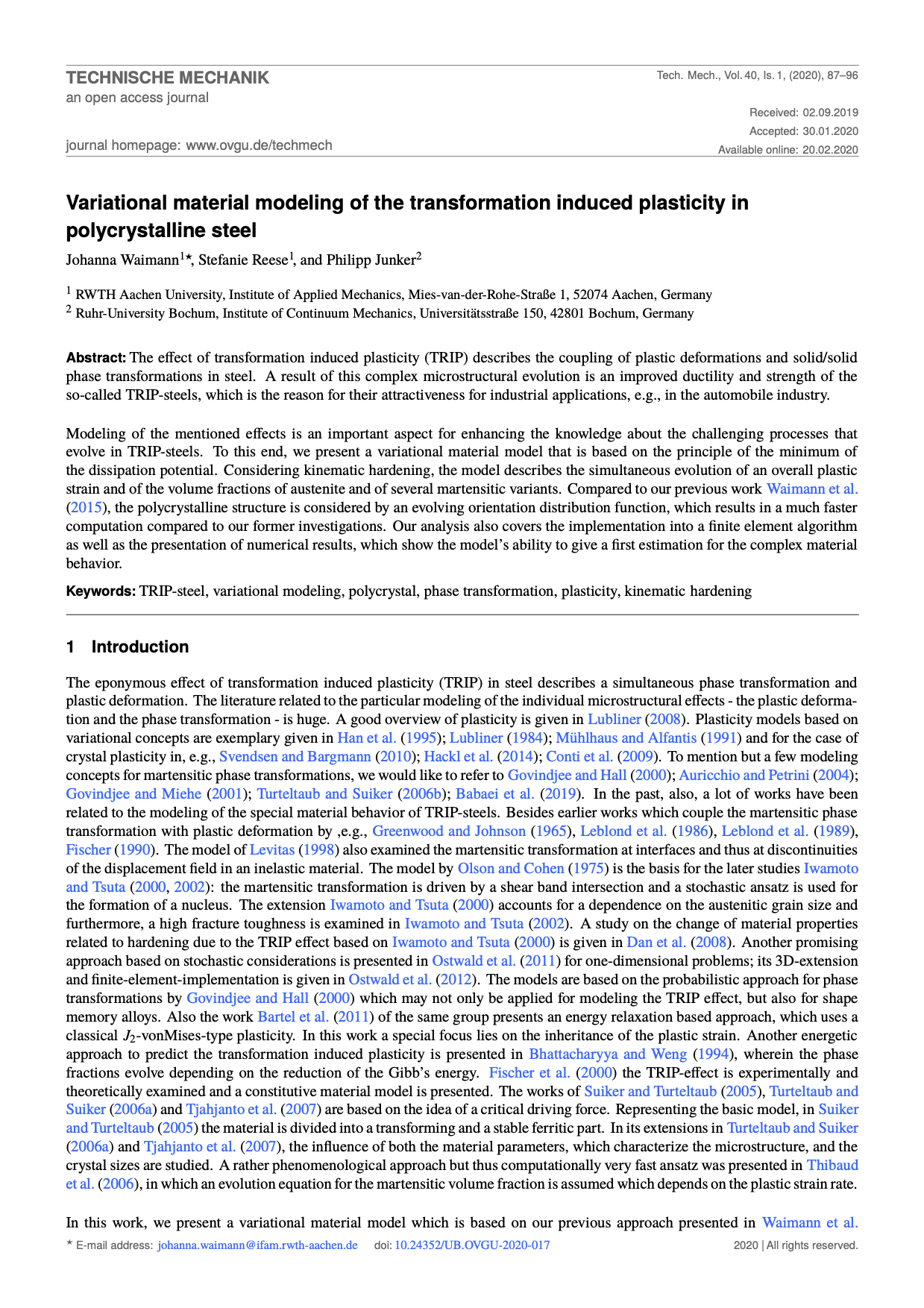Variational material modeling of the transformation induced plasticity in polycrystalline steel
DOI:
https://doi.org/10.24352/UB.OVGU-2020-017Keywords:
TRIP-steel, variational modeling, polycrystal, phase transformation, plasticity, kinematic hardeningAbstract
The effect of transformation induced plasticity (TRIP) describes the coupling of plastic deformations and solid/solid phase transformations in steel. A result of this complex microstructural evolution is an improved ductility and strength of the so-called TRIP-steels, which is the reason for their attractiveness for industrial applications, e.g., in the automobile industry.
Modeling of the mentioned effects is an important aspect for enhancing the knowledge about the challenging processes that evolve in TRIP-steels. To this end, we present a variational material model that is based on the principle of the minimum of the dissipation potential. Considering kinematic hardening, the model describes the simultaneous evolution of an overall plastic strain and of the volume fractions of austenite and of several martensitic variants. Compared to our previous work Waimann et al. (2015), the polycrystalline structure is considered by an evolving orientation distribution function, which results in a much faster computation compared to our former investigations. Our analysis also covers the implementation into a finite element algorithm as well as the presentation of numerical results, which show the model’s ability to give a first estimation for the complex material behavior.





